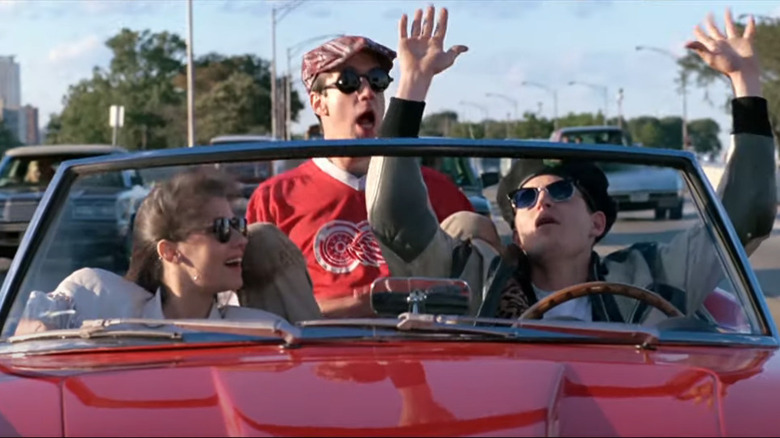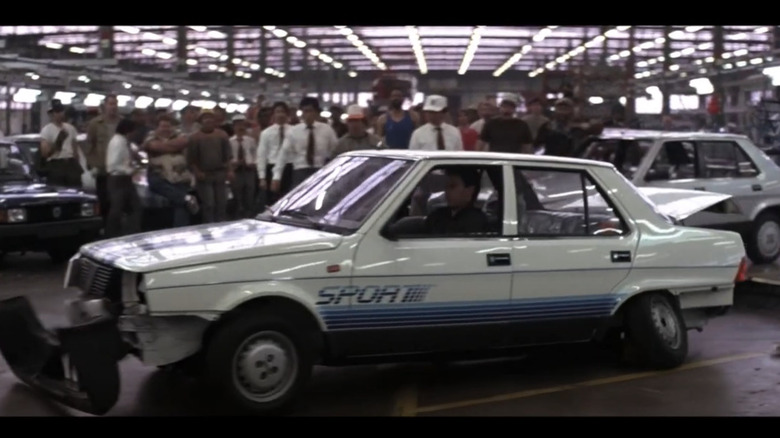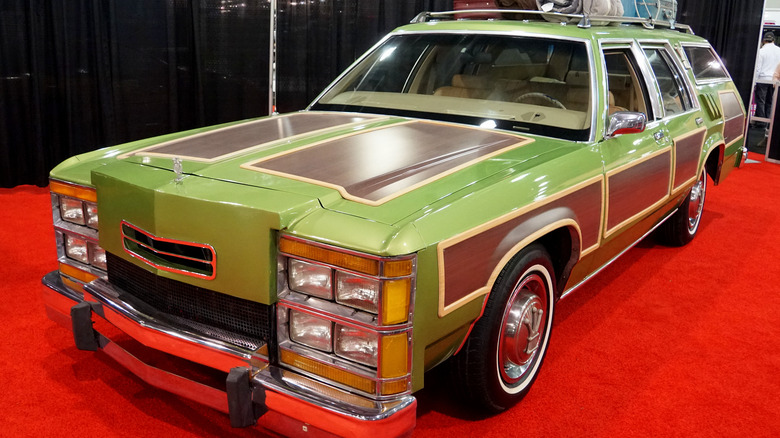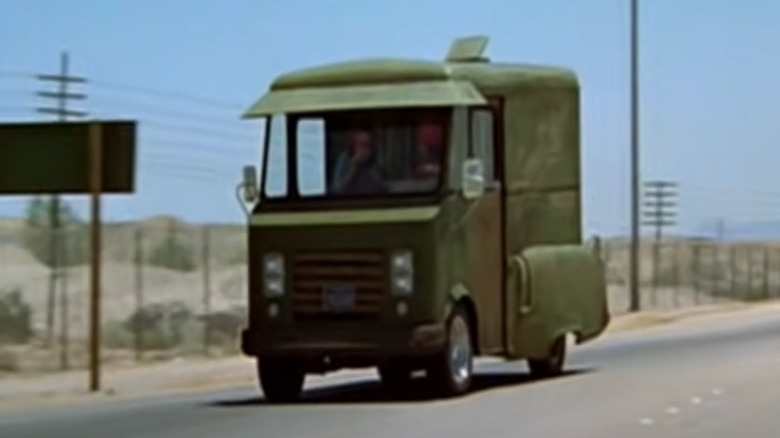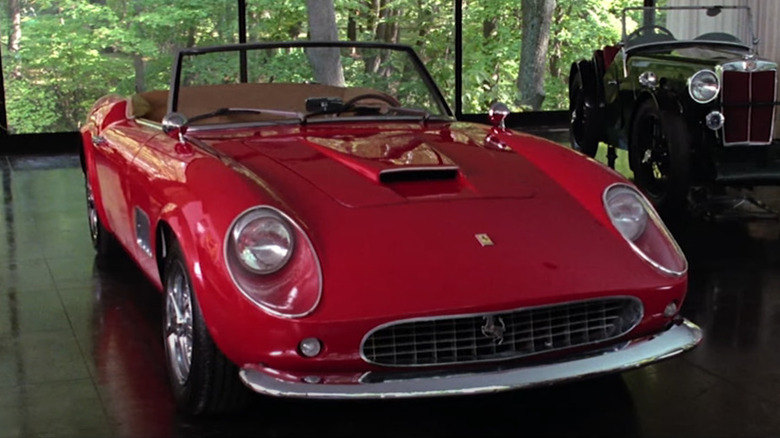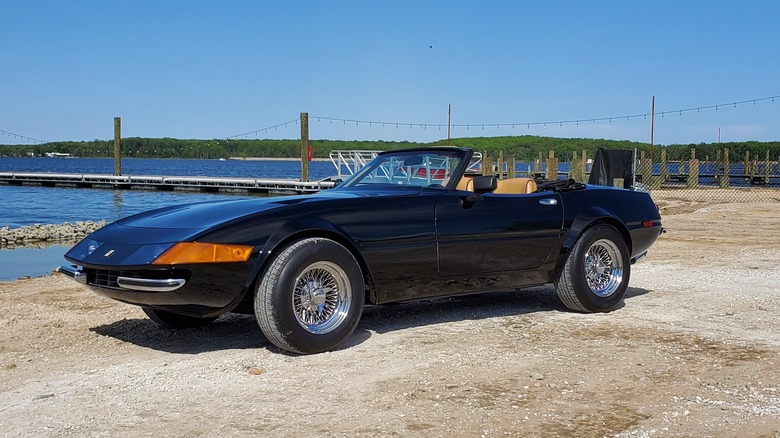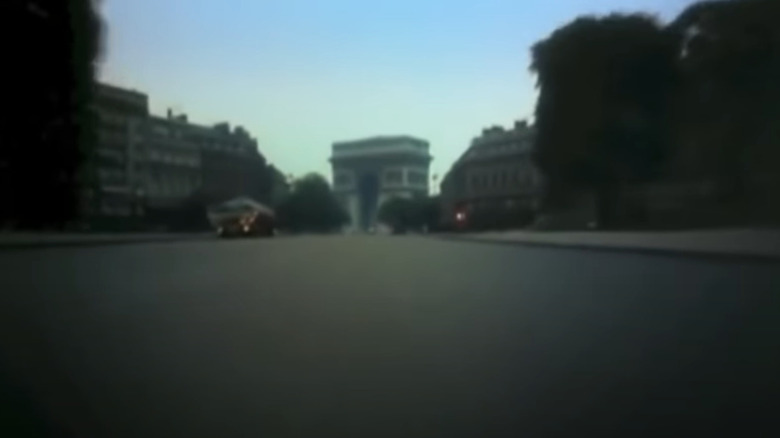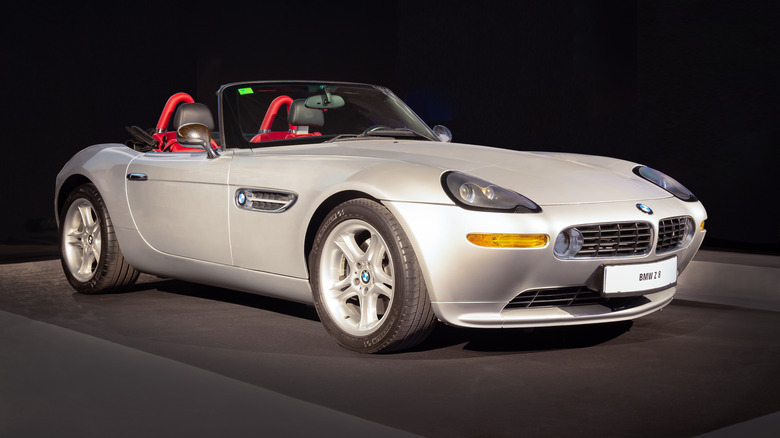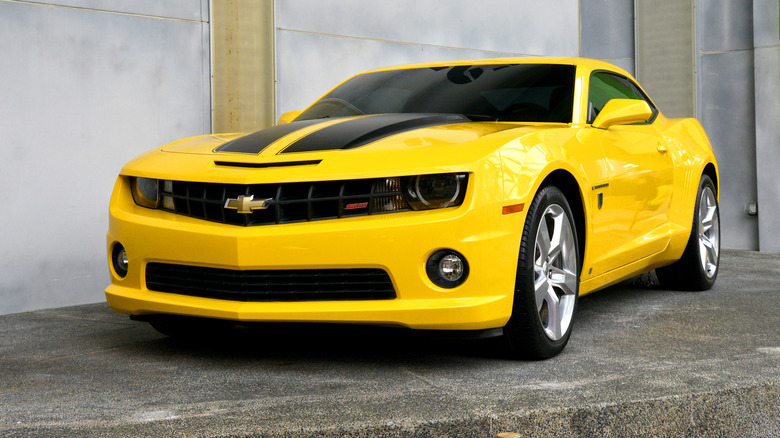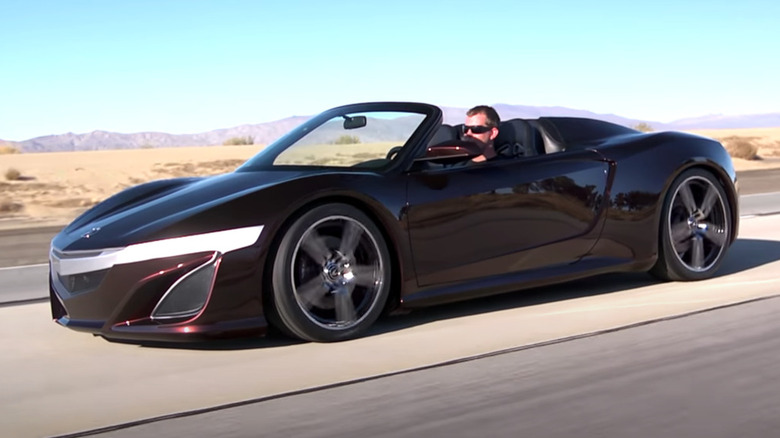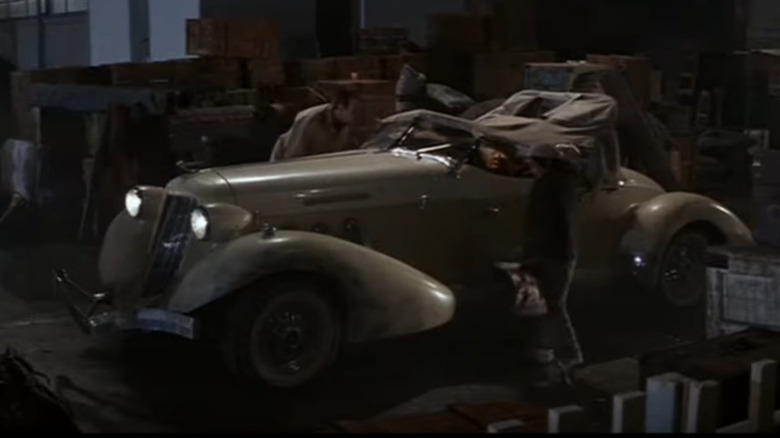10 Iconic Movie Cars That Weren't Even Real
Cars and movies go together so naturally. They have been a part of pop culture as long as either one has been around, and that is about the same amount of time. But the car you want is not always available so producers have to fudge things a bit from time to time. In some productions, the car called for in the script is rare and the risk of damage to a car on set is too great. Other times the car is just too expensive and the cost to rent or otherwise procure the vehicle is also too high.
Producers have a few tricks they can employ to get a good car to stand in for the original. One option is to find a replica. Some of the replicas available are faithful recreations and nobody will notice the difference, with a possible exception of the most ardent of car and movie critics combined. Producers sometimes have to create a car that doesn't exist, employing car builders or custom shops to fit made from scratch body panels on an existing vehicle or chassis. Modern productions can use computers and we should really be thankful for all the hard work that went into these special effects in the older films. You may be familiar with these 10 cars, but they weren't even real.
Gung Ho - Assan Motors Corporation
The 1986 movie showcasing the clash of cultures between American workers and Japanese businessmen is not one of those films that get watched over and over, passed down through the generations. It is mostly forgotten, really. However, it does feature a stellar performance by Michael Keaton and it is directed by Ron Howard, a couple of Hollywood heavy-hitters. But in the movie, a Japanese company takes over a Pennsylvania car factory to produce their Assan vehicles. Not much is needed to know about it after that. Roger Ebert said of the film, "Comedy shouldn't try to be funny; it should allow us to find the humor for ourselves. "Gung Ho" doesn't give us that chance."
Producing a film about auto manufacturing requires both autos and a factory. To fulfill both requirements, Howard opted to fly the cast to Argentina to overtake a Fiat factory as a stand-in. The Japanese cars being built were actually European Fiat 147, or Spazio in South America, according to IMDB. So the cars were real, they just weren't Japanese and the Assan motor company is completely fictional.
National Lampoon's Vacation - Wagon Queen Family Truckster
Perhaps the most lovable of all American family man goofs is Clark Griswold, played by Chevy Chase in the Vacation series of movies. These films are perennial favorites that never seem to tire no matter how much time passes. Not only are they full of comic hijinx, but they also utilize prop comedy rather adeptly, including cars.
In one of the opening scenes of the inaugural film "National Lampoon's Vacation," we find our dad-hero arriving to pick up the new car he had previously ordered from the factory, only to discover it has not been delivered. Through a fraught negotiation with a slimy stereotype of a shady car salesman — played expertly by Eugene Levy — Griswold ends up with the Wagon Queen Family Truckster. This giant American wagon appeared to be an amalgamation of every terrible styling cue conjured from the depths of the eighties. It is hideous to the point of absurdity and that is why it fits so perfectly in this film.
The Family Truckster isn't a real car, though. Producers gussied up 5 1979 Ford LTD Country Squire wagons for the film, according to Hagerty, and examples of the car have come up for auction a few times over the years. For many, especially those growing up in the eighties, the Family Truckster holds a special place as a placeholder for every family's nightmare experience of traipsing cross country in the family station wagon we love to hate.
Cheech and Chong - Weed Van
It is hard to underestimate the cultural impact of comedy duo Cheech and Chong and their cannabis-filled movies. The low-budget flicks established a whole new film genre, the stoner comedy. The first of these films, "Up In Smoke," debuted in 1978 and has since become a cult classic and spawned a generation of spin-offs, parodies, and homages to the original. And while cars and motorcycles feature prominently in many scenes of the movies, the van made of Weed is center stage throughout most of the film.
Part of the plot, for those who have not yet been enlightened to the low-brow comedy genius that is Cheech and Chong, involves the duo going to Tijuana to unsuspectingly smuggle pot across the border in a big, green van. However, the pot is being smuggled ingeniously — the van is made from the sticky icky. The weed van is part of the inane nature of the unbelievable, yet hilarious pot devices employed in the film. Of course, a van could not be made from cannabis, or could it? It is made from a 1966 Chevrolet Step Van modified with the rear quarter panels of a 1954 Cadillac and a bunch of fiberglass-looking substance to approximate weed panels, according to its one-time owners. It is obviously a farce but it is also a lot of fun, and sometimes that's all a movie is meant to be.
Ferris Bueller - Ferrari 250 GTO
"Ferris Bueller's Day Off" is one of many films from famed writer and director John Hughes and is now one of his most-loved movies of the period. Ferris Bueller follows the titular character through a single day in which the young high school student skips class and heads off onto an adventure throughout the city of Chicago. In the film, Bueller convinces his best friend Cameron, played by Alan Ruck, to take his father's most prized possession, a red Ferrari 250 GTO California Spyder. From then on, the car features prominently throughout the film until its demise toward the end.
Today, the 250 GTO is among the most valuable cars on the planet, with one having sold as recently as 2016 for $17 million, according to Gooding and Co. Even in the eighties, it was a valuable car, so a vehicle of much lower value would have to be used in the film. The car in the film is a Modena Spyder, which is a faithful recreation of the original Ferrari, per The Drive. The replica had been built before the script was written, but 3 more were built specifically for filming, with one with no engine made specifically to be destroyed on film. The functional cars were well done and powered by Ford V8 engines and are today highly valuable. Although auction prices are a fraction of the real thing, the Modena from the film recently sold for nearly $400K, a comprative bargain.
Miami Vice - Ferrari Daytona
Slipping "Miami Vice" into this list is a bit of a cheat as it is a TV show rather than a movie, but the story, as well as the car, are so great they are worth talking about. Ask anyone alive in the era what the most eighties thing of all eighties things is, Miami Vice is likely to be the answer. In the first two seasons, vice detectives Crockett and Tubbs drive a 1972 Ferrari 365 GTS/4 Daytona Spyder. We reported that this car is a replica built on a Corvette chassis and powered by a Chevrolet V8. It was blown to pieces at the end of the second season.
The script did not originally call for the car to be blown up. Ferrari is well known for aggressively protecting its intellectual property, and it has done that for decades. Ferrari had originally turned down producers who wanted to feature their car in the show and that is when producers chose a replica. However, Ferrari later sued as they considered the use of the cars as Ferraris was trademark infringement. In the end, Ferrari relented and offered to donate two brand-new Testarossas to the show if they removed the replicas from production, according to Rosso Automobili Magazine. It was probably a good public relations decision for Ferrari as the show was a huge success and the iconic Ferrari became an indelible mark of the eighties for fans of Miami Vice everywhere.
C'etait un Rendez-Vous - Ferrari 275 GTB
This short French car film is a gem, but not terribly well known outside certain circles of proper petrolheads. The film is only eight minutes long and does not even feature a car, except that it does. No car is ever shown on screen, but it is definitely a film showing a drive across Paris with a soundtrack to match the high-speed thrill of racing through winding city streets. Dig around the interwebs and you can find much written about this little Parisian movie, a lot of which is conjecture. However, Hagerty dug up some dirt about its origins and production and has enlightened us to some juicy details.
This was filmed in 1976, long before anything digital existed and before videotape was a meaningful alternative to anyone outside of broadcast TV. The filmmaker, Claude Lelouch, fitted a camera to the front of a car and drove a winding and often perilous-looking 10 kilometers through Paris in the early hours of the morning, before traffic congested the city. The thrilling footage is enhanced by the roar of the V12 pushing the Ferrari through the medieval streets. But that is where things go a bit sideways. The camera was hanging off of the front bumper of a Mercedes 450SEL and the sounds from a real Ferrari were added later.
It is a fascinating little film and worth a viewing. It is also well past the time something like it could ever be made again.
The World Is Not Enough - BMW Z8
James Bond and cool cars together are the epitome of cool. The Bond franchise is famous for its car chases, extravagant crashes, and daring escapes. Six actors have portrayed agent 007 since 1963 and they have all driven a variety of cool cars, some of them equipped with space-age spycraft and defensive capabilities. The fifth Bond, Pierce Brosnan, drove one such cool car in "The World is Not Enough," a BMW Z8. As an Englishman, Bond had historically driven English cars, like Aston Martin and Lotus, but a product tie-in with BMW in the nineties changed all that.
In this movie, we get to see Bond utilize some of the obligatory gadgets such as rocket launchers but also see a foretelling of things to come with a remote start and summon feature, something unheard of in 1999. However, something also unheard of is a 1999 Z8, because it did not exist until the 2000 model year. According to Top Gear, the production Z8 was not ready during filming, so BMW provided a couple of unfinished pre-production cars and gave producers specs to create other completely fabricated custom cars powered by a Chevy V8 with a Jaguar suspension for filming, particularly the scene where one gets sawed in half. The Z8 gets very little screen time in this movie, likely because they didn't really have a complete car to work with.
Transformers - Chevrolet Camaro
Two things loved by kids brought up in the eighties are Transformers and Camaros. That may have been at least part of what drove the first of the modern Transformers movies to success (a massive budget and marketing tie-ins with General Motors helped). As one of the lead characters in the 2007 film, the Autobot known as Bumblebee showed up in a car lot as a ratty used Camaro. Not long after its first appearance, it transforms itself into a shiny new yellow Camaro, a car that had left the market some five years earlier.
Anyone paying close attention might note that the new generation Camaro did not go on sale until 2010, three years after the film. Before releasing the new model, GM did take pre-production models on the auto show circuit and passed around press photos for some time before actually making the car. But with the product deal with the movie, GM helped Michael Bay to recreate the new car using a Holden Monaro -– the same thing as a Pontiac GTO in North American markets -– as the base for the car, with body panels molded to look just like the planned production Camaro, according to Variety. The car and movie proved to be a hit as they both have gone on to sell millions of each in successive generations for the next decade and four Camaros used in the Transformers movies sold at auction in 2019 for $500,000.
The Avengers - Acura NSX
The Marvel Cinematic Universe is an ever-expanding one. It is also an ever-profitable one. New Marvel movies come out at a rapid pace and have been doing so for years. The Avengers threads a needle between all the Marvel heroes into one grand display of superhuman power united against the baddies. With all this strength and marketing prowess comes the ability to cross-promote a myriad of products, including cars.
Tony Stark, aka Iron Man, is a wealthy individual whose affluence gives him the unique ability to purchase his way to hero strength with a whole bunch of high-tech super toys. Granted, he does his part to save the human race but, without his money, he is just a regular Elon Musk.
The 2012 movie "The Avengers" coordinated its release with a slew of ads for Acura, featuring superheroes and supercars in the same commercial spots. Iron Man also drove an Acura in the film, a drop-top NSX except the new NSX model did not go on sale until 2017. The Atlantic reported that this problem was overcome by taking a 1992 NSX with 250,000 miles and transforming the exterior to look like the upcoming car that would not be released for another five years. The NSX interior was unchanged and still retained the original cassette player, as seen in this Inside Line video. The Acura was a good rendition of the future car but was dumped for Audi in the next Iron Man film.
Temple of Doom - Auburn Speedtail
The Indiana Jones franchise is another that is cherished by millions. The allure of the films lies in the way they combine action with history and good character development. An archaeology professor is an unlikely hero, yet Indiana Jones, played by Harrison Ford, is a gripping and lovable character whose villains always seem to be incompetent, hapless, and generally useless henchmen. Being set in the pre-war era, classic cars are used in the production, including the most prominent automobile scene in which Indiana's kid sidekick, Short Round, rescues Jones and his newfound female companion in a 1935 Auburn Speedtail. The kid does a remarkable job driving the Auburn through crowded Shanghai streets considering he uses blocks tied to the pedals to reach them.
The Auburn rescue is quite dramatic and one of the best action scenes of the film. The Auburn used to film it is not actually a period car, though. While not a lot of information can be found about the car, Stuff New Zealand reported in 2016 that the actual movie car ended up in New Plymouth, New Zealand. It appears to be a later recreation of the Auburn much like one of the models made by the Auburn-Cord-Duesenberg company of Broken Arrow, OK. That company hand-built Auburn cars based on late-model chassis for years out of its midwestern shop but is now in the process of building all-new cars from the original plans exactly as they were in the '30s.
